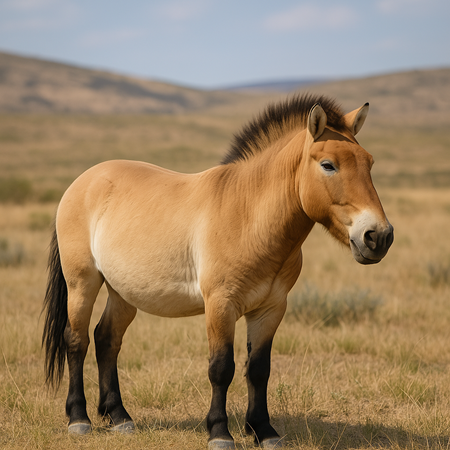
Przewalski’s horse, also known as the Mongolian wild horse or Asiatic wild horse, is a rare and endangered species of horse that is native to the steppes of central Asia, particularly Mongolia.
The history of Przewalski’s horse dates to the late 19th century when it was first discovered by the Russian explorer, Colonel Nikolai Przewalski, in 1879. The horse was named after Przewalski in recognition of his contributions to the field of exploration and natural history.
The discovery of Przewalski’s horse was significant because it was the last remaining wild horse species in the world. Unfortunately, the horse’s population began to decline rapidly due to hunting, habitat destruction, and competition for resources with domestic livestock.
In the early 20th century, efforts were made to conserve and protect the species. In 1945, a group of Przewalski’s horses were captured in Mongolia and taken to the Prague Zoo in Czechoslovakia for breeding and conservation purposes. This captive breeding program was successful, and in the 1990s, some of the horses were reintroduced into their natural habitat in Mongolia.
Today, the Przewalski’s horse is still classified as endangered, but its population has increased from just a few dozen individuals in the 1960s to several hundred in the wild and in captivity. Conservation efforts continue to be made to protect and increase the population of this rare and beautiful species.
10 Fun Facts About Przewalski’s Horse
Przewalski’s horse is the last remaining wild horse species in the world.
They are smaller in size than domesticated horses, with a stocky build, thick neck, and short, upright mane.
Przewalski’s horses are social animals and usually live in small herds, typically consisting of one stallion and several mares and their foals.
They are well adapted to living in harsh environments with extreme temperatures, such as the arid steppes of Mongolia.
Przewalski’s horses have a unique genetic makeup that distinguishes them from other horses. In fact, they are the only true wild horses, as even other so-called “wild” horse populations have some degree of domestication in their ancestry.
Unlike domestic horses, Przewalski’s horses have never been ridden or trained for riding.
They are excellent runners and can reach speeds of up to 35 miles per hour.
The Przewalski’s horse has a thick coat that changes color with the seasons, becoming paler in the winter to blend in with the snowy environment.
The horse’s scientific name, Equus ferus przewalskii, honors the Polish explorer who first described the species.
In Mongolia, the Przewalski’s horse is considered a symbol of freedom and strength, and it is featured on the country’s coat of arms.
Related Articles & Free Email Newsletter Sign Up
Clydesdale Horses Offer Size, Strength, and a Gentle Nature
How Positive Reinforcement in Training Improves Horse Memory
Scottish Highland Cattle are Generally Hardy and Low Maintenance


Comment here